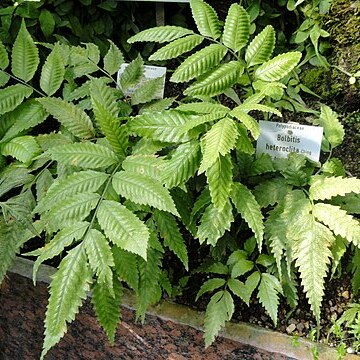Plants small to medium-sized, terrestrial or creeping on rocks or riverbanks or small trees. Rhizome creeping or shortly erect, dorsiventral, covered with ovate to linear-lanceolate, brown or blackish scales. Fronds dimorphic, evergreen, simple, pinnate, or rarely bipinnate. Sterile fronds: stipe with ovate or lanceolate brown scales at base; lamina mostly ± herbaceous, apex usually with a bulbil, margin entire or crenate to deeply lobed, with or without teeth or spines, veins either free or variously anastomosing, with or without included free veinlets. Fertile fronds similar in shape to sterile ones, usually with longer stipe and narrower lamina. Sori acrostichoid, without indusia. Spores globose or nearly so, with thick epispores.
Terrestrial lithophytic or epiphytic ferns. Rhizome short-to long-creeping, densely scaly; scales lanceolate and peltately attached or cordate and attached by the sinus; scale margins with glandular hairs. Fronds dimorphic, crowded, in 2-6 rows. Stipe decurrent on the rhizome. Lamina entire or 1-pinnate, often proliferous near the apex; lamina of fertile fronds usually smaller than the sterile fronds, with narrower pinnae and a longer stipe; veins conspicuous anastomosing, with or without included veinlets, rarely free. Sporangia covering most of the ventral surface of the fertile pinnae. Spores bilateral. See also Short et al. (2003: 66).

